This article was co-authored by Joel Warsh, MD. Dr. Joel Warsh is a board certified Pediatrician and the Owner & Founder of Integrative Pediatrics and Medicine in Los Angeles, California. With over a decade of experience, Dr. Warsh specializes in holistic and integrative medicine. He holds a Bachelor’s degree in Kinesiology and Health Sciences, a Master’s degree in Epidemiology and Community Health, and a Doctor of Medicine (MD) from Thomas Jefferson Medical College, where he was elected president of the Jefferson Pediatric Society. Dr. Warsh then completed his Pediatric Residency at Children’s Hospital of Los Angeles (CHLA), where he received the George Donnell Society Research Fellow.
There are 18 references cited in this article, which can be found at the bottom of the page.
This article has been viewed 40,537 times.
Torticollis (or wryneck) is a harmless condition that just means your neck is crooked or twisted to the side. It can affect adults after an injury or show up in newborns as congenital torticollis. If you’re an adult with acute torticollis, it’ll usually go away in a week or two with regular physical therapy, stretching, and massages. When it comes to infants and babies, you can expect it to subside within 6-12 months. However, there are things you can do to help correct your baby’s neck sooner. If you have any concerns or if you don’t see improvement within a few months, talk to your pediatrician.
Steps
Correcting Your Baby's Torticollis
-
1Stretch the tight side of your baby's neck very gently. Start by placing your baby on their back in their crib or on a comfy, padded surface with their feet pointing towards your body. To stretch the left side of their neck, place the palm of your left hand on the back of your baby's head with their ear touching your inner wrist. Put your right hand on your baby's left shoulder and gently press their head so that their right ear moves toward their right shoulder.[1] Stop when you feel the first bit of resistance and hold the position for 30 seconds.[2]
- This to stretch the left side of your baby's neck. If their head is leaning to the right, reverse your hands so that you can lean their left ear toward their left shoulder.
- It helps to calm your baby with some comforting coos while you’re doing this so they don’t resist or get fussy.
- Go extremely slow and be gentle! If your baby gets fussy, stop the stretch and try again later.
- If your baby shows any sign of pain at the slightest movement, call your pediatrician.
-
2Do gentle neck rotations to increase your baby’s range of motion. Lay your baby down flat and place your right hand on the front of their right shoulder. Use your left hand to gently turn their head so that they're looking to their left. Stop when you feel some resistance and hold the position for 30 seconds. Doing this stretch 3 to 4 times a day will help relax your baby’s tight neck muscles over time.[3]
- You can do the other side as well, but it’s more important to focus on the side that’s tight.
- If your baby's head tilts to the left, swap your hand so that you're turning their head to the right.
- Try to do this one when your baby’s calm and relaxed, like after a bath or meal.
Advertisement -
3Feed your baby with their head turned away from the favored side. Aim your nipple or the nipple of the bottle so that your baby has to turn their head away from the side it usually leans towards. Don't make them turn too much at first, just offer it so that they have to turn their head a little farther each time. Gradual changes add up and, odds are, your baby won’t mind![4]
- This is a good practice if your baby is prone to getting fussy because the milk or formula will keep them calm even if they feel some slight discomfort from turning their head.
-
4Put your baby’s favorite toys on their unfavored side. Position your baby so that they have to turn their head to see all of their favorite things (like toys, pretty pictures, and you!). This is a sneaky way of getting them to stretch out the tight side of their neck all on their own. For instance, if their neck is tilted to the right, put things toward their left so they have to turn to look at them. If their neck is tilted toward the left, put them on the right.[5]
- This will encourage your baby to increase their range of motion, stretching the stiff muscles little by little.
- You can do this when your baby is on their belly or seated in a carrier or high chair.
-
5Carry your baby on their side to gently stretch their neck. Position your baby so that they're on their side with their back against your torso. Make sure the tight side of their neck is closest to the ground (i.e., if their head tilts to the left, hold them with their head on your left side). Run your right arm between your baby's legs and grasp onto their lower arm or torso to support their weight. Place your left forearm between your baby's ear and left shoulder to encourage a gentle stretch.[6]
- If your baby’s head is crooked to the right, switch the positioning so that their head is on your right side.
-
6See your pediatrician if their torticollis isn't improving. Talk to your pediatrician about the stretches you've been doing and any other efforts you've made to help correct your baby’s neck positioning. Your doctor may give you some extra tips and check in with you in a few weeks or they may refer you to an infant physical therapist.[7] [8]
- In most cases, it can take 6-12 months for the torticollis to go away, so try to be patient and keep doing gentle stretches.
- If your baby is at least 3 to 4 months old and the stretches aren’t working, your doctor may suggest using frequency-specific microcurrent therapy to relax the tight muscles. It’s a simple, non-invasive procedure that takes only a few minutes per session. It may take 1 to 3 treatments to see a lasting difference.[9]
- If the torticollis doesn’t go away within 6-12 months, talk to your pediatrician about getting some x-rays or using a cervical collar. Your child may have to wear the collar for at least 2 months to correct the issue.
Treating Torticollis in Adults
-
1Do neck rolls and side-neck stretches several times a day. Try doing some slow neck rolls or leaning your ear down toward your shoulder a few times. Go slow and don’t try to stretch too hard at first—stiff muscles mean your range of motion is going to be less than normal for a while. Complete at least 5 neck rolls in both directions and 8 ear-to-shoulder stretches every 4-6 hours.[10]
- To do neck rolls, start with your head in an upright position and lower your chin to your chest. Slowly roll your head to the right until your ear is directly over your shoulder. Return back to the center with your chin tucked to your chest and roll to the left.
- To stretch the sides of your neck, start with your head upright and then slowly lower your right ear down toward your shoulder. Hold the stretch for 10 counts and then return to the starting position before leaning to your left side.
- If you have acute torticollis, be sure to stay active and try to move your neck as normally as you can. Moving it around will keep it from stiffening up.
- If you have severe torticollis, talk to a doctor before you try to do any neck stretches.
-
2Get a neck and upper back massage.[11] See a licensed massage therapist and let them know about your neck stiffness. During the massage, try to relax and breathe through any slight pain you might feel. If you feel any sharp pains during the massage, definitely let your practitioner know so they can adjust the pressure or move on to another area. Try to get a massage 1-2 times a week.[12]
- Massages can be pricey, but it's worth going to a professional instead of any regular day spa for treating a neck injury.
- Ask your doctor or, if you have one, physical therapist if they recommend a good massage therapist who specializes in neck injuries. In some cases, your physical therapist may opt to massage your neck before or after your sessions.
- Massage therapy will help increase circulation to the muscles in your neck and lengthen tight, shortened muscles. It may not fix your torticollis on its own, but it can ease pain and help your neck get back to normal sooner when you combine it with other treatment options.
-
3Take anti-inflammatory painkillers to ease the pain and stiffness. Take 1 or 2 tablets or capsules of any over-the-counter NSAID like ibuprofen or acetaminophen. Wash it down with 8 fluid ounces (240 mL) of water and reassess whether you need to take another dose 4 to 6 hours later.[13]
- Adults can safely take 325 mg of ibuprofen (1 or 2 tablets depending on the strength) every 4 to 6 hours. Don’t take ibuprofen in high doses for longer than 1 week because it can increase the risk of stroke or heart attack.
- Traces of acetaminophen can pass into breast milk, so talk to your doctor before taking it if you’re pregnant or breastfeeding.
- If your pain is pretty intense, see your doctor about getting a prescription for a muscle relaxant like diazepam, methocarbamol, or tizanidine.
-
4Wear a cervical collar to support your neck after an injury. If your torticollis was caused by a car accident, strain, or some other injury, consider wearing a neck brace for 1-2 weeks to help straighten it out. Follow your doctor's instructions about how long to wear it so your neck muscles don't weaken from too much support.[14]
- See your doctor about getting the right size cervical collar for you or go to a medical supply store and try some on. It should be tight enough to support your neck but not so tight that it's uncomfortable.
- If you have acute torticollis, you may only need to wear the collar for a few days or up to 1 week.
- Don't wear the collar over a long period of time (2+ weeks) without your doctor's approval because it can cause other muscles in your neck to stiffen up or weaken.
-
5Get a botox injection to relieve stiffness and muscle spasms. If you have acute torticollis and frequently feel spasms in the area, ask your doctor about getting a botox injection to relax your muscles. Plan to get just 1 shot and then follow up with your doctor 1-2 weeks later to see if it’s working.[15]
- Your primary doctor can refer you to a physical medicine and rehabilitation (PMR) specialist to administer the injection.
- Injections work best when you’re also doing physical therapy and daily stretching.
- Depending on how severe your torticollis is, you may need to get 1 injection every week or every other week.
-
6Hold an ice pack onto your neck for 10 to 15 minutes at a time. Wrap a cold compress or bag of frozen veggies in a cloth and hold it onto your neck. Take it off after 10 to 15 minutes and do it again 2 to 3 hours later. You can do this as many times a day as you need to help treat pain and loosen up your neck muscles.[16]
- Don’t put the cold pack straight onto your skin because it could leave you with an ice burn.
-
7Put a heating pad on your neck for 15 to 20 minutes. Sit or lie down in a comfortable position with your head as straight and upright as it'll go. Place a heating pad or hot compress on your neck, relax, and then take it off after 15 to 20 minutes. Do this every 2 to 3 hours until the pain has subsided and you feel like you can move your neck around normally again.[17]
- As an alternative, wrap a hot damp towel around your neck. You can even soak the towel in equal parts Epsom salt and warm water for extra soreness relief.
- Hot therapy is recommended only if the area isn’t visibly swollen. If you’ve been in an accident that caused your torticollis, wait 48-72 hours after the accident before using heat therapy.
-
8Get an acupuncture treatment once a week to reduce inflammation. Find a licensed acupuncturist near you by doing a simple online search (e.g., “acupuncture San Diego”). Wear loose-fitting, comfortable clothing to your appointment. While you’re getting the treatment, expect to lay on the table with tiny needles in your neck and back for about 45 minutes or so. You might feel some immediate relief right after the needles are inserted![18]
- Acupuncture doesn’t hurt, but it might feel a little weird at first.
- Eat a light snack about 2 hours before your appointment so you’re not hungry or feeling lightheaded when you stand up after your treatment.
- Block out some time before and after so you can relax instead of having to rush back to work or other duties.
- Avoid getting acupuncture if you take blood thinners.
-
9Try cupping therapy to relieve pain and stiffness. Lookup a licensed cupping massage therapist in your area and schedule an appointment. Wear loose, comfy clothing that’s easy to take off and put back on. The treatment is just like getting a massage—expect to lay down on a massage table and relax![19]
- The therapist will place suction cups on your skin around your upper back and neck area. You may feel an odd pinching or squeezing sensation at first, but it will pass as you get used to it. The therapist might leave the cups in place for a few minutes or move them around to increase blood circulation.
- You’ll have some round bruise-like marks on your skin after the session, but they’ll start to fade in a few days. In some cases, the marks can last for 1 or 2 weeks.
- Avoid cupping therapy if you have eczema or psoriasis because it can worsen your symptoms.
Expert Q&A
Did you know you can get expert answers for this article?
Unlock expert answers by supporting wikiHow
-
QuestionHow does torticollis go away?
 Tiffany Jumaily, MDDr. Tiffany Jumaily is a Board Certified Pediatrician and a fellow of the American Academy of Pediatrics (FAAP) based in Los Angeles, California. With over a decade of experience in the medical field, Dr. Jumaily specializes in identifying the root cause of symptoms and presenting manifestations of disease. She holds a BA in Biology from Boston University and an MD from Boston University School of Medicine. Her dedication to combining evidence-based allopathic medicine with complementary and alternative therapies has led to her being featured and cited in various platforms including U.S. News & World Report, Forbes, and CBS Los Angeles.
Tiffany Jumaily, MDDr. Tiffany Jumaily is a Board Certified Pediatrician and a fellow of the American Academy of Pediatrics (FAAP) based in Los Angeles, California. With over a decade of experience in the medical field, Dr. Jumaily specializes in identifying the root cause of symptoms and presenting manifestations of disease. She holds a BA in Biology from Boston University and an MD from Boston University School of Medicine. Her dedication to combining evidence-based allopathic medicine with complementary and alternative therapies has led to her being featured and cited in various platforms including U.S. News & World Report, Forbes, and CBS Los Angeles.
Board Certified Pediatrician
-
QuestionIs torticollis serious?
 Tiffany Jumaily, MDDr. Tiffany Jumaily is a Board Certified Pediatrician and a fellow of the American Academy of Pediatrics (FAAP) based in Los Angeles, California. With over a decade of experience in the medical field, Dr. Jumaily specializes in identifying the root cause of symptoms and presenting manifestations of disease. She holds a BA in Biology from Boston University and an MD from Boston University School of Medicine. Her dedication to combining evidence-based allopathic medicine with complementary and alternative therapies has led to her being featured and cited in various platforms including U.S. News & World Report, Forbes, and CBS Los Angeles.
Tiffany Jumaily, MDDr. Tiffany Jumaily is a Board Certified Pediatrician and a fellow of the American Academy of Pediatrics (FAAP) based in Los Angeles, California. With over a decade of experience in the medical field, Dr. Jumaily specializes in identifying the root cause of symptoms and presenting manifestations of disease. She holds a BA in Biology from Boston University and an MD from Boston University School of Medicine. Her dedication to combining evidence-based allopathic medicine with complementary and alternative therapies has led to her being featured and cited in various platforms including U.S. News & World Report, Forbes, and CBS Los Angeles.
Board Certified Pediatrician
-
QuestionWhat exactly is torticollis?
 Tiffany Jumaily, MDDr. Tiffany Jumaily is a Board Certified Pediatrician and a fellow of the American Academy of Pediatrics (FAAP) based in Los Angeles, California. With over a decade of experience in the medical field, Dr. Jumaily specializes in identifying the root cause of symptoms and presenting manifestations of disease. She holds a BA in Biology from Boston University and an MD from Boston University School of Medicine. Her dedication to combining evidence-based allopathic medicine with complementary and alternative therapies has led to her being featured and cited in various platforms including U.S. News & World Report, Forbes, and CBS Los Angeles.
Tiffany Jumaily, MDDr. Tiffany Jumaily is a Board Certified Pediatrician and a fellow of the American Academy of Pediatrics (FAAP) based in Los Angeles, California. With over a decade of experience in the medical field, Dr. Jumaily specializes in identifying the root cause of symptoms and presenting manifestations of disease. She holds a BA in Biology from Boston University and an MD from Boston University School of Medicine. Her dedication to combining evidence-based allopathic medicine with complementary and alternative therapies has led to her being featured and cited in various platforms including U.S. News & World Report, Forbes, and CBS Los Angeles.
Board Certified Pediatrician
Warnings
References
- ↑ Joel Warsh, MD. Board Certified Pediatrician. Expert Interview. 2 February 2021.
- ↑ https://www.stjude.org/treatment/patient-resources/caregiver-resources/patient-family-education-sheets/rehabilitation/torticollis-left-side.html
- ↑ https://www.stjude.org/treatment/patient-resources/caregiver-resources/patient-family-education-sheets/rehabilitation/torticollis-left-side.html
- ↑ https://intermountainhealthcare.org/blogs/topics/intermountain-moms/2017/11/infant-torticollis/#:~:text=Infant%20torticollis%20(tor%2Dti%2D,3%20in%20every%20100%20babies.
- ↑ https://www.nationwidechildrens.org/family-resources-education/health-wellness-and-safety-resources/helping-hands/exercises-left-torticollis-positioning-for-play#:~:text=Carrying%20your%20child&text=Put%20your%20forearm%20between%20the,legs%20to%20support%20the%20body.
- ↑ https://www.nationwidechildrens.org/family-resources-education/health-wellness-and-safety-resources/helping-hands/exercises-left-torticollis-positioning-for-play#:~:text=Carrying%20your%20child&text=Put%20your%20forearm%20between%20the,legs%20to%20support%20the%20body.
- ↑ Joel Warsh, MD. Board Certified Pediatrician. Expert Interview. 2 February 2021.
- ↑ https://www.nationwidechildrens.org/family-resources-education/health-wellness-and-safety-resources/helping-hands/exercises-left-torticollis-positioning-for-play#:~:text=Carrying%20your%20child&text=Put%20your%20forearm%20between%20the,legs%20to%20support%20the%20body.
- ↑ https://health.clevelandclinic.org/torticollis-how-parents-can-help-correct-a-babys-head-tilt/
- ↑ https://www.healthdirect.gov.au/torticollis
- ↑ Tiffany Jumaily, MD. Board Certified Pediatrician. Expert Interview. 16 March 2021.
- ↑ https://www.ncbi.nlm.nih.gov/pmc/articles/PMC2664516/
- ↑ https://pch.health.wa.gov.au/For-health-professionals/Emergency-Department-Guidelines/Torticollis
- ↑ https://www.ncbi.nlm.nih.gov/pmc/articles/PMC2684205/
- ↑ https://www.ncbi.nlm.nih.gov/pmc/articles/PMC1293637/
- ↑ https://myhealth.alberta.ca/health/AfterCareInformation/pages/conditions.aspx?hwid=abq6305&
- ↑ https://myhealth.alberta.ca/health/AfterCareInformation/pages/conditions.aspx?hwid=abq6305&
- ↑ https://www.ncbi.nlm.nih.gov/pmc/articles/PMC6106756/
- ↑ https://www.researchgate.net/publication/338047594_MANAGEMENT_OF_ACUTE_TORTICOLLIS_BY_OIL_CUPPING_MASSAGE_A_CASE_STUDY
- ↑ https://www.ncbi.nlm.nih.gov/pmc/articles/PMC2270377/
- ↑ https://www.health.harvard.edu/pain/say-good-night-to-neck-pain
- ↑ https://pubmed.ncbi.nlm.nih.gov/27607589/
- ↑ https://academic.oup.com/ptj/article/79/1/50/2857770
- ↑ https://www.stjude.org/treatment/patient-resources/caregiver-resources/patient-family-education-sheets/rehabilitation/torticollis-left-side.html
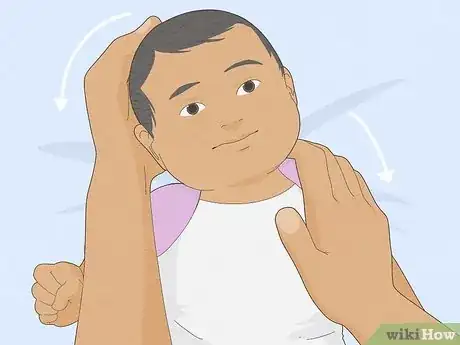



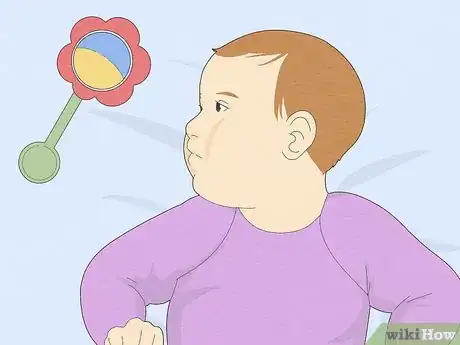
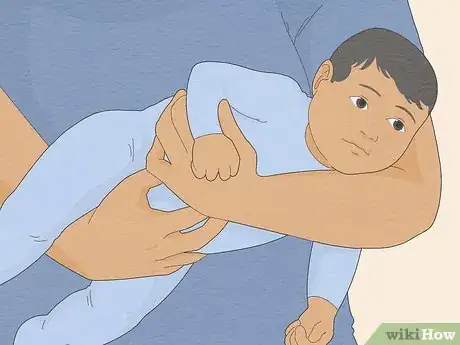


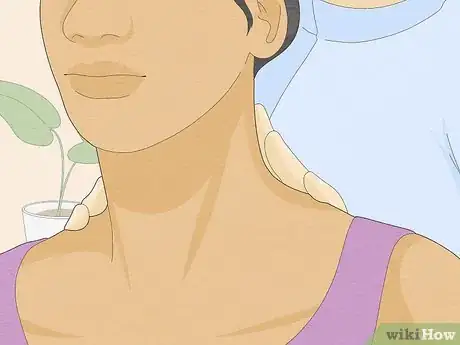

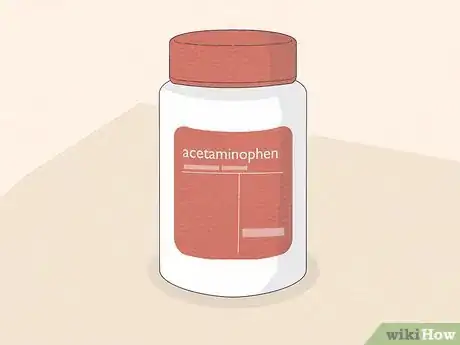
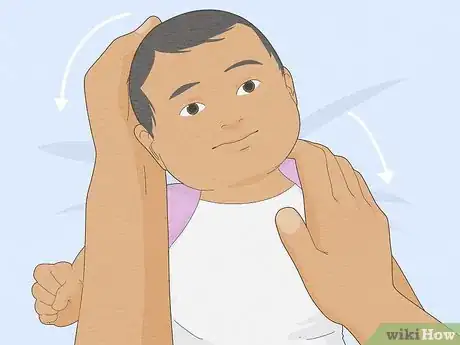
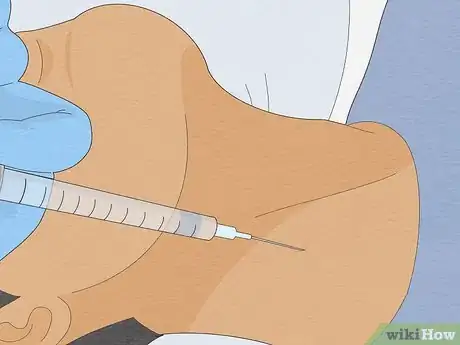
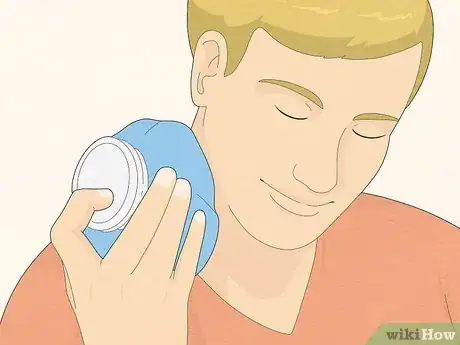
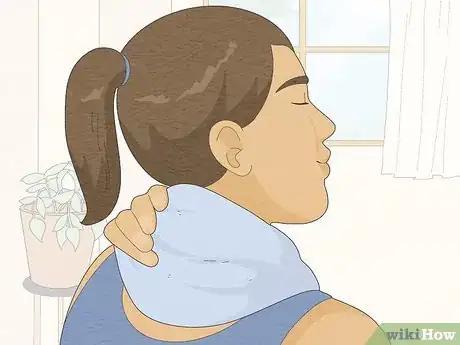
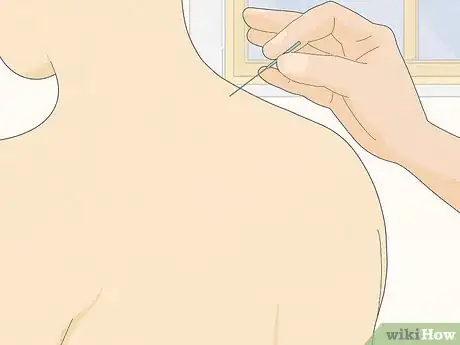
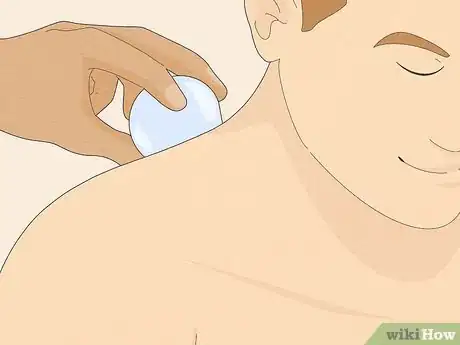

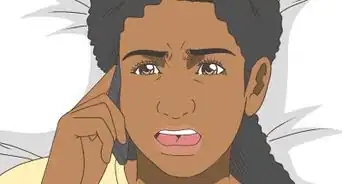
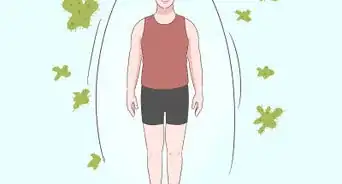



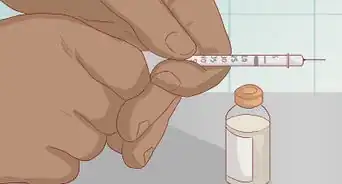

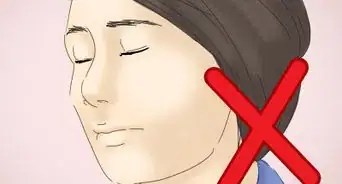
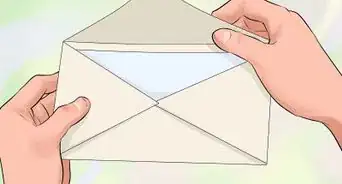








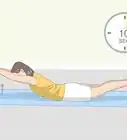
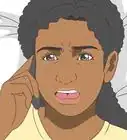
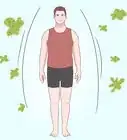




































Medical Disclaimer
The content of this article is not intended to be a substitute for professional medical advice, examination, diagnosis, or treatment. You should always contact your doctor or other qualified healthcare professional before starting, changing, or stopping any kind of health treatment.
Read More...